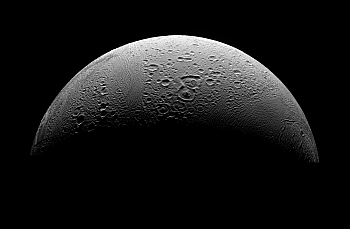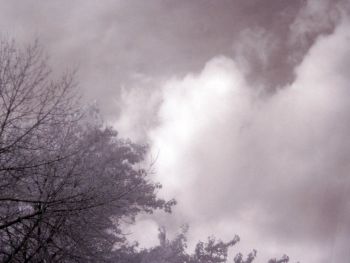Monday, July 27, 2009
ISS/Shuttle passes are over in Chicago
If you are searching for ISS and Shuttle passes over Chicago, tonight's was the last one for a while. If you are an early morning person, mid August will work; if not, early September is the next time you can see the ISS in Chicago.
Thursday, July 23, 2009
Tuesday, July 21, 2009
Two awesome things you have already heard about
The LRO imaged most of the Apollo landing site on the Moon. Things will get better as the orbital parameters are modified.
There appears to have been an impact of some sort on Jupiter, first seen by an Australian amateur.
There appears to have been an impact of some sort on Jupiter, first seen by an Australian amateur.
Friday, July 10, 2009
Tuesday, July 07, 2009
ISS through a telescope
I just watched an awesome pass of the International Space Station over Chicago. I was able to catch it and follow* the ISS through a telescope at about 50x: the space station appeared as an eagle with orange solar panel wings, with a white body and a small white point source on the main axis. It was excellent, and that was at low power! Here was Tyrell's approach three years ago.
*follow in the sense of every twenty seconds moving a giant dome, followed by a german equatorial telescope in advance of the ISS and hoping I wasn't too slow.
*follow in the sense of every twenty seconds moving a giant dome, followed by a german equatorial telescope in advance of the ISS and hoping I wasn't too slow.
Monday, July 06, 2009
Evening passes of the ISS visible in Chicago
There are a number of nice passes of the International Space Station visible in Chicago for the next two weeks. Take a look at Heavens-Above for the set for Chicago.
Here are the highlights for the evening passes, when they begin, how bright they are, and how high in the sky; click on the link above to get the full details. In some cases you will be able to see the ISS on successive orbits.
6 Jul -2.6 21:42:04 31
6 Jul -1.3 23:17:17 29
7 Jul -3.2 22:06:11 76
8 Jul -2.6 20:55:50 32
8 Jul -1.1 22:31:06 29
9 Jul -3.1 21:19:57 72
10 Jul -1.0 21:44:51 28
11 Jul -2.9 20:33:38 69
12 Jul -0.9 20:58:31 27
Here are the highlights for the evening passes, when they begin, how bright they are, and how high in the sky; click on the link above to get the full details. In some cases you will be able to see the ISS on successive orbits.
6 Jul -2.6 21:42:04 31
6 Jul -1.3 23:17:17 29
7 Jul -3.2 22:06:11 76
8 Jul -2.6 20:55:50 32
8 Jul -1.1 22:31:06 29
9 Jul -3.1 21:19:57 72
10 Jul -1.0 21:44:51 28
11 Jul -2.9 20:33:38 69
12 Jul -0.9 20:58:31 27
Thursday, July 02, 2009
Lunar Reconaissance Orbiter first images
The first test images are back from the LRO.
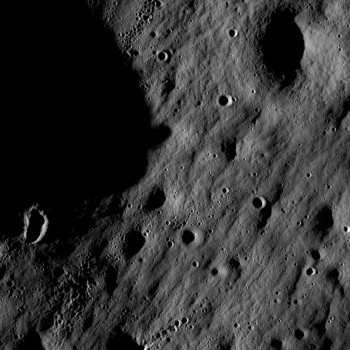
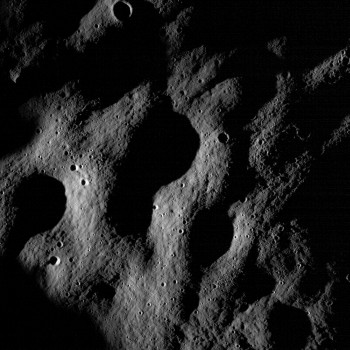
I've annotated a previous image of the moon with the location of the image: The orange markers are at the crater Hell E, which is listed in the press release as being just a few kilometers west of the image site. Hell E is listed as 10km across, so the images are just a touch to the right of that crater. Click on the image for a large original.
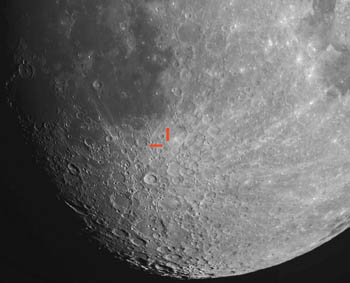
Credit for the LRO images are NASA/GSFC/ASU.


I've annotated a previous image of the moon with the location of the image: The orange markers are at the crater Hell E, which is listed in the press release as being just a few kilometers west of the image site. Hell E is listed as 10km across, so the images are just a touch to the right of that crater. Click on the image for a large original.

Credit for the LRO images are NASA/GSFC/ASU.
Subscribe to:
Comments (Atom)
